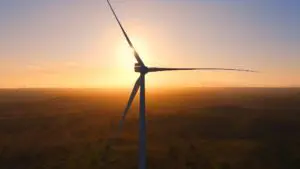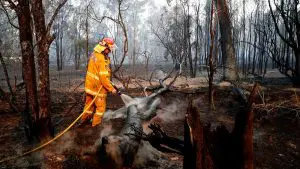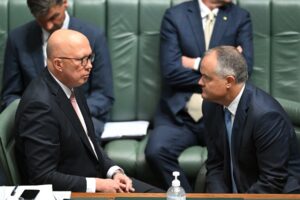South Australia’s Energy Plan is a fascinating document from a national perspective. It solves some problems and creates others, but it’s interesting for at oad
east two reasons.
- It provides a mechanism to explicitly transfer 10% of State Royalties on gas exploration back to land owners. The reason why fracking has faced less opposition in the USA than in Australia is because in the USA most of the royalties on exploration go to the land owner. In Australia the mineral rights under the ground belong to the Crown. If landowners in NSW and Victoria were paid enough their opposition to CSG would be less. How much are we talking about here? Royalties are typically 8-10% of well head production value. Current gas prices are say $10 GJ. So we are looking at the landowner getting say $0.10 per GJ. A CSG well in QLD might produce 300 TJ a year. So that well might produce about $3000 for a landowner who got 10% of the royalties. We assume this would be in addition to traditional compensation paid for access and use of land.
- The South Australia Govt will legislate to give the Energy Minister direction over the market so South Australia’s best interests always come first if there is an electricity shortfall. This frankly has the distinct possibility of making the NEM less functional. It may not matter so much in South Australia, which at the end of the day is a small market but if Victoria, NSW, or QLD were to follow suit it could have severe consequences for the NEM. As South Australia is by historic quirk the legislator of “the national electricity law” it will likely be difficult for the Federal Govt or other States to do much about South Australia’s assumption of over riding power.
A new twist on Federal State relations
We’ve already pointed out that COAG provides Governance without management, but beyond that the emerging issue is whether electricity management is or should be a State or Federal responsibility.
“What does the law say?
Constitutionally, energy policy in Australia is a matter for state governments. The development and implementation of the National Electricity Market over the past two decades has been achieved through the Council of Australian Governments (COAG), with harmonised legislation in each state.
State governments therefore have the constitutional scope to act both independently and in consort to achieve clean energy related goals.
Whether they should choose to do this, however, is another question. There is an obvious national context including Australia’s participation in international climate change processes such as the UN Framework Convention on Climate Change.
National policy coherence also has value in avoiding uncoordinated policies that can adversely impact investment incentives, increase compliance costs, and generally lead to less efficient outcomes.” (source: the conversation)
State Govts in Vic, Qld, NSW and South Australia have developed their own electricity and carbon targets. In our view they are doing this because the Federal Govt policies are perceived to be inadequate, mostly around carbon but increasingly around energy security and now the price of electricity.
We suspect that there will be more to be said about this but South Australia’s forthcoming legislation clearly goes a step further in potentially disrupting the ability of the NEM to function “seamlessly” at a Federal level than simple State legislated renewable targets managed by reverse auctions.
Meanwhile back in South Australia…..
Our view has been that South Australia has two or even three major electricity “issues”. They are:
- Risk of blackouts caused by shortage of power. Its clear that the extra 300 MW of power from the 100 MW of battery and 200 MW fast start peaking gas generator will solve many of those issues. However, these new peaking plants still have a combined capacity less than the Heywood interconnector’s 650 MW. So a trip in that connector coupled with a low wind situation is still potentially a problem.
- Grid instability issues. This problem includes inertia, frequency and voltage control. We expect the battery will be a big help in this regard. I have read that a battery’s speed of response and its ability to deal with over frequency events as well as under frequency events means that from some points of view (fast frequency response) a battery can provide 10X or 15X times the amount of grid support that a thermal (gas generator) can provide on a MW for MW basis.
- High prices caused by shortage of energy. Any number of studies have shown that electricity in South Australia is very cheap when the wind is blowing but is very expensive when gas has to shoulder the burden. The Government’s plan will do next to nothing to solve this issue in the short term. Neither the battery nor the peaking gas plant are designed to be run for extended periods of time. Any new gas that may be discovered will not result in a new combined cycle plant for at least five years, if ever.
The battery is the big thing
Its obvious that from a renewables perspective the big news in the South Australian policy is the 100 MW battery tender. Over the past 12 months arguably this is the fourth major global announcement on battery storage.
- The Aliso Canyon storage project in California showed that 70 MW of storage could be brought on stream in California in under six months.
- In the UK, National Grid procured 200 MW of fast frequency response for at a total cost of ₤ 66 m = A$ 106 m UK fast frequency tender. A few details on the largest part of this can be found at NEC/VLC JV
- KEPCO the giant South Korean energy company is in the midst of installing 500 MW of Frequency Control storage. A brief discussion can be found at Clean technica South Korea storage project
Still, the South Australian tender for 100MW is larger than any of the individual bits of the above announcement. It will be interesting to see for instance whether the 100MW is split between more than one tenderer.
It seems very clear that the battery is there to provide frequency control services and supplementary peaking power. Its not going to provide much energy.
If we’ve done numbers right, we think the battery could work as a peaking generator. Sth Aust. Battery as peaker. We’d note that this analysis was very back of the envelope. We ignored transmission and distribution costs to recharge the battery and assumed 4MWh of energy for every 1 MW of power.
However for Frequency control purposes the battery will likely not be fully charged. We understand for instance the 10 MW battery in Ireland is left 70% charged so it can cope with over frequency events as well as under frequency.
For some more background we’d refer again to the marek Kubik podcast. Marek is Energy Storage Analyst with AES and leads the AES UK client solutions team. AES presently has the world’s largest installed capacity of utility scale storage.
To clear up one point of confusion. All of the above projects are focused on power (measured in MW) and not energy (MWh). The “power plants” are not designed to “time shift” but to provide power for either seconds (frequency control) or 1-2 hours (peak generation).
Wind and or PV + storage as dispatchable energy
At the extreme there are two ways batteries can be deployed to “time shift”. The can be deployed at the point of consumption (ie in the household) or they can be deployed next to say the wind farm. A proper analysis of whole of system benefits of deploying batteries at the household has yet to be done in Australia. Your author is on a mission to see such a study properly done.
Our view is that deploying storage at the household or fringe of grid level for time shifting purposes is likely to be by far the most economic way to do that if the analysis is properly done. However in the meantime let’s look at the second best option.
The comparison is between a combined cycle gas plant [CCGT] and a windfarm plus battery. Our view is that CCGT is a good fit with PV and a bad fit with wind.
A couple of generic notes. Most CCGT takes about 4 hours to reach fully power from a “warm start” ie there is water in the boiler. Siemens though claims a Panda Sherman plant in Tx can do it in an hour. Its heat rate (gas consumption per unit of electricity produced) is around 7.5GJ/MWh. In addition to the costs of the gas plant, there also needs to be a gas pipeline contract (firm capacity for 365 days a year, 24 hours a day), probably a small gas “bottle” at the site and of course a 20 year gas supply contract.
At the moment we just don’t think you could get a 20 year gas supply contract in South Australia. But lets assume you could. Lets also ignore the risk of carbon cost, CCGT plants emit about 0.4 t CO2/MW
Our view is that in South Australia new wind still has lower LCOE than PV because of the good capacity factors. Southern South Australia is not especially strong in terms of irradiation.
We model out a CCGT with a A$10 GJ gas cost, a wind project with 45% capacity factor (optimistic based on the past but maybe not so for new projects) and then a third scenario where we add 4 hours of lithium storage to the wind project at A$1.2 m MW extra cost (effectively A$250 MWh). This may be unduly optimistic. We get the following very, very rough results.

Modelled in this way the wind + battery project needs about $20 MWh more than the wind farm and is still marginally more expensive than CCS. If we added in a $30 t carbon cost then the CCGT plant needs another $12 MWh making it roughly equal.
The CCGT project would have the advantage of being able to operate for extended periods whereas the storage can only run for four hours.
The storage part of the wind + storage can take advantage of 5 minute price spikes (assuming these actually exist)
On average the wind plant is going to be a price taker for about 6.5 hours a day ie running when the wind blows but storage is empty.
So the real question is whether the time shifting can lift the average price enough to justify the investment. Last year it could have. But whether that remains case in the future is yet to be seen.
We would add that there could well be both conceptual and arithmetic mistakes in this way of modelling out storage. Its early days and long experience with Excel based NPV models shows they are subject to a wide range of subtle and not so subtle errors.
David Leitch is principal of ITK. He was formerly a Utility Analyst for leading investment banks over the past 30 years. The views expressed are his own. Please note our new section, Energy Markets, which will include analysis from Leitch on the energy markets and broader energy issues. And also note our live generation widget, and the APVI solar contribution.







